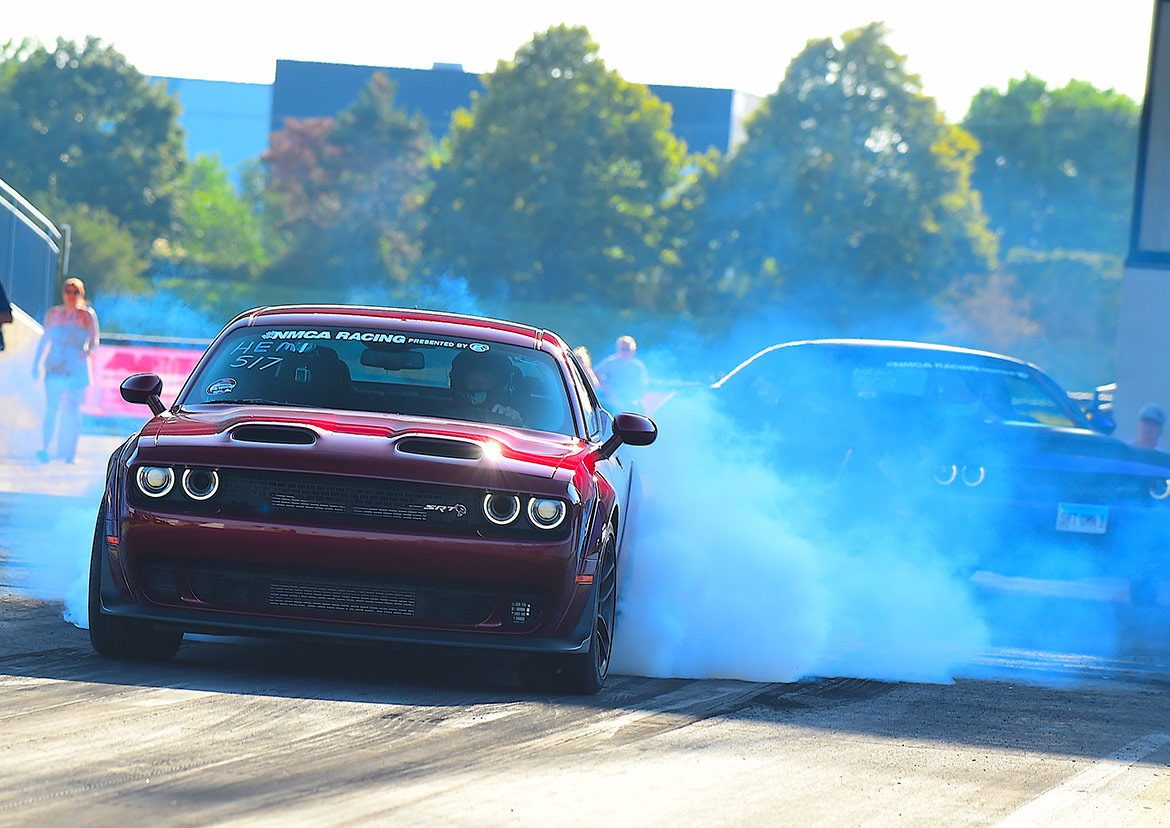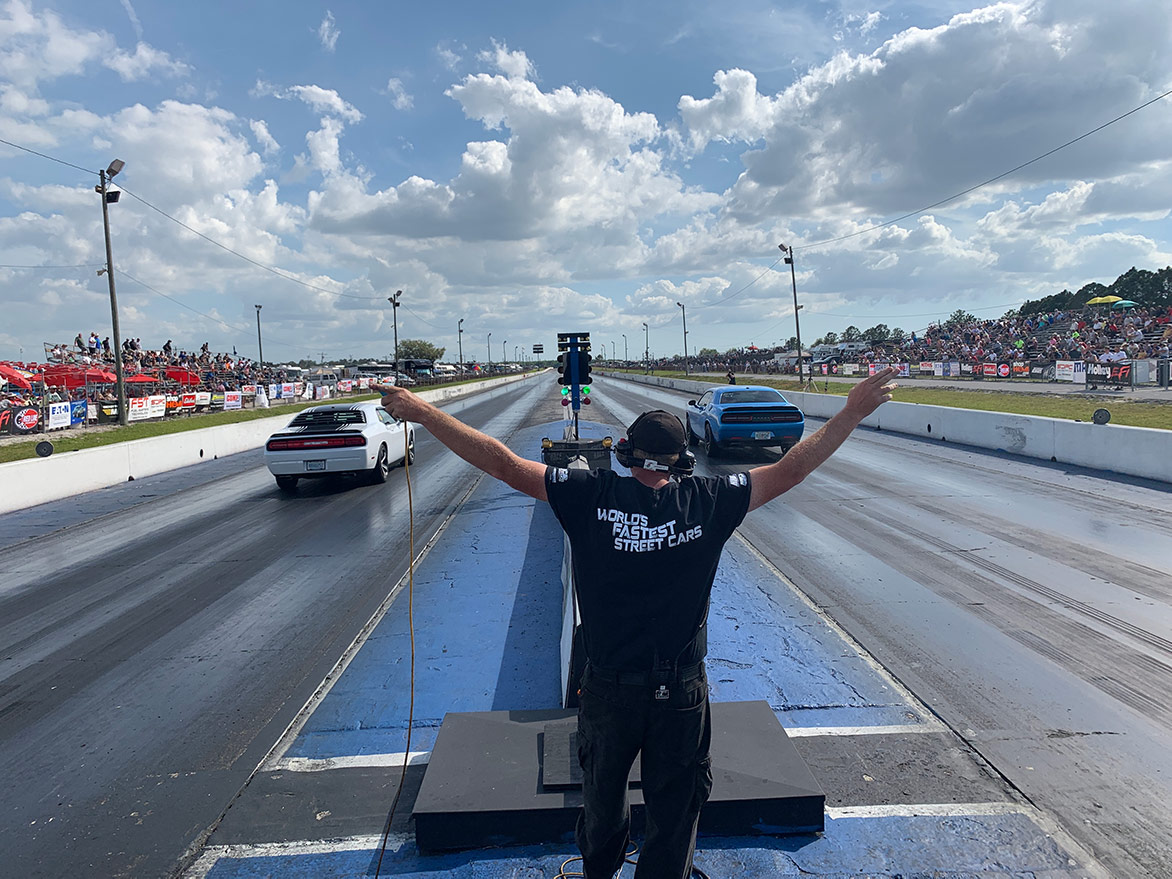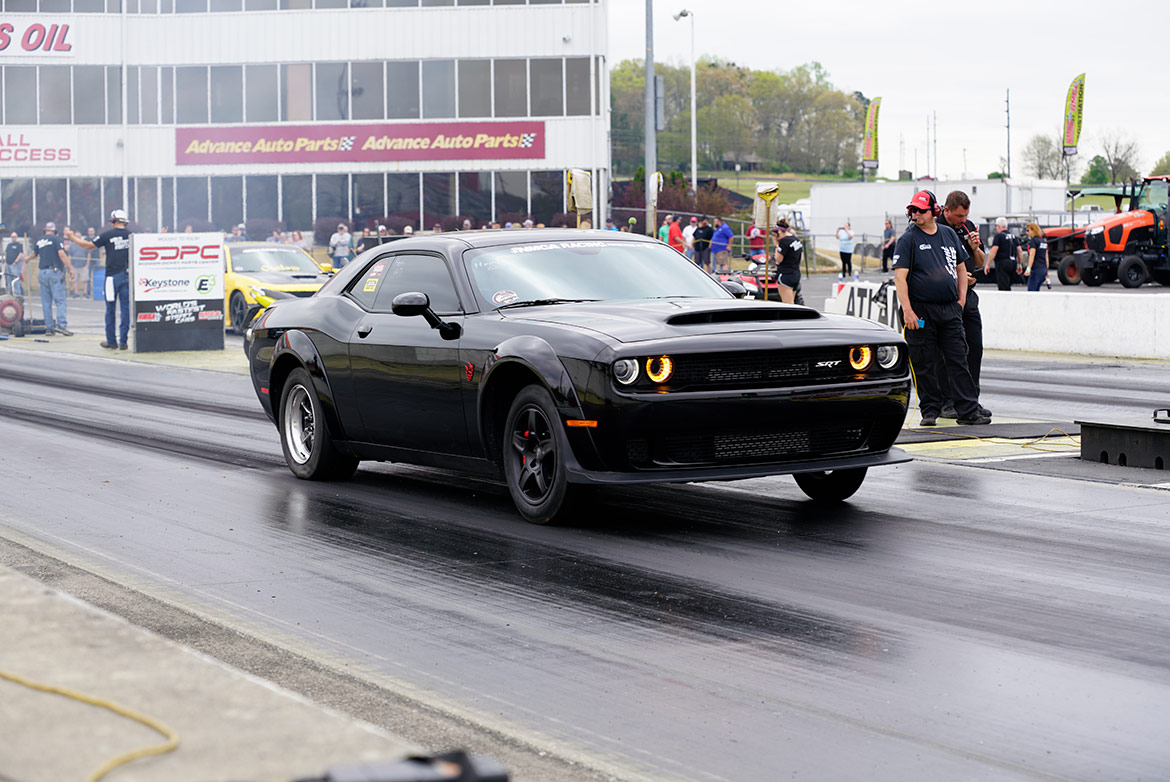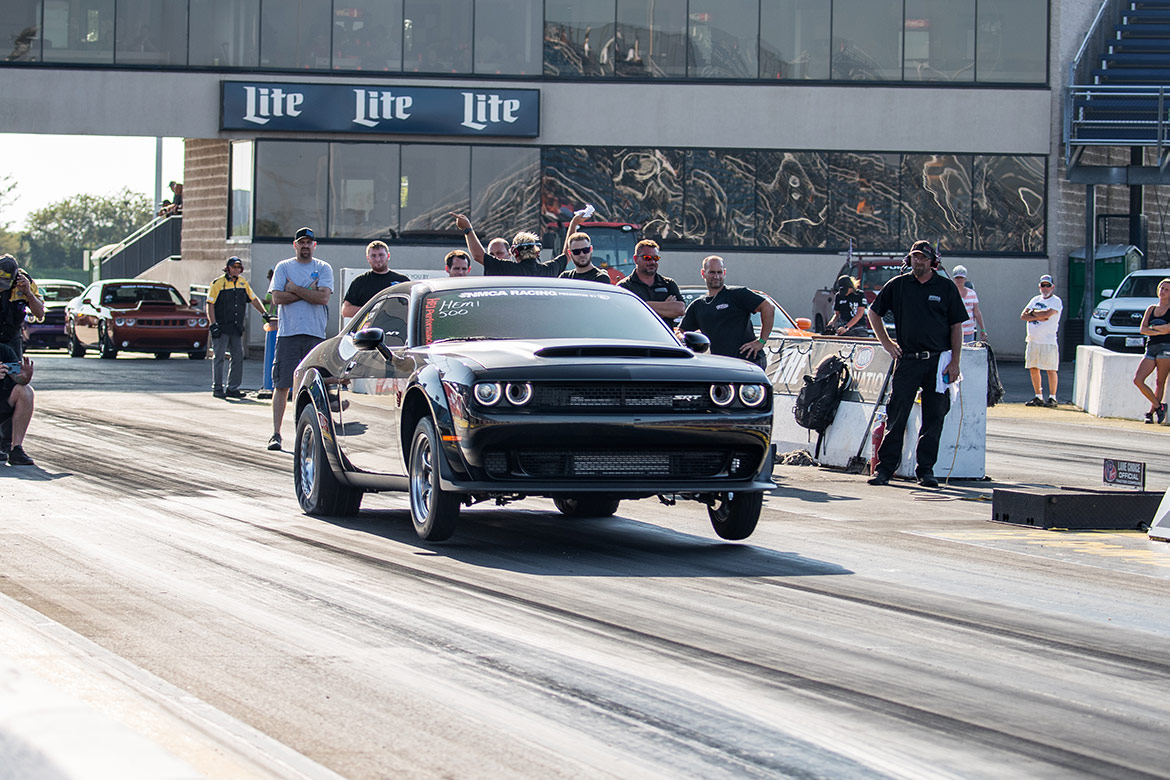It’s All About the Tires
It doesn’t matter how much power your bad-to-the-bone Dodge vehicle is pumping out when it comes time to go to the drag strip. Whether you are ripping out 1,000 horsepower or 500 horsepower, you are going to be very disappointed if you take that bad boy to the track on your 20” wheels and street tires. There are two main concepts to get a grip on (pun intended) for picking out tires for the drag strip.
Size matters, but not how you think.
One of the biggest hurdles with drag racing a modern streetcar is traction. This is true with any drag car, but even more of a hurdle with streetcars. Today’s modern Dodge and SRT® cars are all unibody chassis. That means the body and frame are all one piece. That puts limitations on altering the chassis and body to fit huge massive tires under that puppy. A common solution in the early days was to “tub out” the rear end. This altered the wheel well and frame in order to fit massive tires. And, boy oh boy, does it look good. Doing something like that on a modern SRT vehicle isn’t that easy to pull off. This is part of the reason Dodge developed the wide-body package and design with the Dodge Challenger SRT Demon. It allowed them to fit a wider wheel and tire combo onto the car without having to alter the chassis.

On really high-horsepower cars, running “big tire”, the only way they are able to get down the track is by running a ridiculously sized tire. They are big. They are wide. They are massive, because they have to be. As horsepower capabilities of modern Dodge vehicles continue to climb, and instant high torque with systems like the SRT Hellcat, SRT Demon and SRT Hellcat Redeye become more available, getting off the line on a street wheel and tire becomes more and more impossible. Looking to the early drag cars, and cars competing in better-known NHRA classes, a lot of people initially think “I need to cram the widest tire I can under here, that’s what the really fast racers do.”
I see a lot of people putting 305 or 315 series drag radials on a 20” wheel hoping to get decent results. The misconception with these production streetcars is that wider is better. I am here to tell you that it is not, necessarily. Due to a whole slew of factors that we won’t get too far into, wider tires will not help you get the results you need on something like a modern-day Charger or Challenger. Wider tires will provide some improvements to your streetcar, well, on the street. In order to really maximize your car’s abilities on the drag strip, you need to be looking at how big of a sidewall you can get in your tire. That’s right, I’m saying forget about how wide you can go.

Let’s talk about how tall you can go. Most current Dodge production cars make dang near full torque early on, right off the line. This is especially true with the supercharged 6.2L HEMI® engine. As factory horsepower has continued to increase since SRT came out with a V8 motor, so has the aftermarket horsepower capabilities. What has proven to be much more effective than tire width is sidewall height. The more sidewall you can get on your tire, the more the tire can absorb some of that energy and get a nice tire wrinkle, which will help your car off the line much more than a slightly wider tire. Obviously, there are limitations to how big you can go based on the size of the wheel well and arch.
There is also some science and math to determining overall tire diameter and matching it to your power and gearing. Regardless of that, you can’t fit a 40” tire inside the arch of the wheel well. So you have to go down in wheel size to add back the appropriate tire sidewall. Generally speaking, any modern Dodge passenger car can fit an 18” wheel on the back. This is probably the most common wheel size to switch to for drag racing. Keep moving down to 17” wheels and you may encounter some hurdles. There are some 17” wheels that will also fit with zero alteration to the car or wheel. However, the ones that don’t fit usually just require an aftermarket sway bar end link that is slightly shorter than stock to clear the wheel. They are very inexpensive and easy to change, making it a great option for a drag wheel.
Converting the rear end to accept 15” wheels is another popular route. This option is rather expensive and labor intensive. But it does provide the best options for picking the right sized tire for the drag strip. But in keeping with the theme of having an epic streetcar that you also take to the track, I suggest sticking with a 17″ or 18” rear tire option.
For a 17” wheel option, a 305/45/17 is a great tire size to use at the drag strip. This size tire generally will fit a 9.5”-11.5” wide wheel. Running a 9.5” wheel over an 11” wide wheel will help save some weight and you still get all the sidewall goodness you need. Another good option depending on your power and gear ratio is a 315/50/17. You may have a hard time cramming that in on the non-widebody cars.

For an 18” wheel option, a 305/45/18 is the most ideal size tire you can run for drag use. Some of the fastest modern-day Dodge racers run this tire size.
For 20” wheel option… just don’t. I promise you, just don’t.
Another major consideration when picking a tire for the drag strip is the type of tire. Most street tires are made to ride nice, last many miles and perform well in all types of weather and temperatures. They are generally a much harder rubber, which is great for the street, but terrible for the drag strip. You will never get the results you want and dream of with a street tire. And if you ever do decide to run down the drag strip with your street tires, there is no need to do a big smoky burnout. It won’t help you out and will just waste away your tires unnecessarily. Drag tires are generally grouped into two categories: Bias Ply tires and radial tires. You can find many great debates on the internet about bias ply vs. drag radial tires, along with the pros and cons of each. In most cases, a drag radial is what you are going to want to use on your streetcar, especially if you are running street tires on the front of the vehicle.
Drag radials are a different type of rubber and compound than your regular street tires. They have one purpose in life, and that is to get traction. This is usually accomplished by manufacturing the tire with a much softer type of rubber than what is found on street tires. They also get softer and stickier with heat. The purpose of doing a burnout at the drag strip is to heat the rubber up to the appropriate temperature to obtain the most traction possible. This will vary from application to application, tire to tire, and track to track. Usually, the softer the compound, the more traction you can get. But keep in mind, the softer they are, the shorter their lifespan. Street-legal DOT-approved drag radials are a very popular option. They are legal to use on the street and on the track and provide great traction. They generally have some type of channels in the surface to make it slightly less slippery on water than ice skates on ice. It is not recommended to ever drive in the rain with drag radials; even if you can, you shouldn’t. There are companies that produce 20” drag radials. They are made of a softer and stickier compound. They have decent traction. The problem is they don’t have enough sidewall to be of much use on the track. They do provide a nice step up from a street tire for use on the street.

At a minimum, you want a decent 17” or 18” pair of tires for the rear with a good DOT drag radial to fit it. Anything less than that and you will be leaving tons of meat on the table (pun intended). Even with the ideal rear wheel and tire setup for the track, it can be a challenge to manage traction. It won’t solve all your problems getting off the line, but it will fix a good portion of them. You can generally get a respectable rear wheel drag setup with tires for around $1,000. It may be one of the cheapest and most effective improvements you can do to your car to perform like a champ on the strip. Try to keep the width and diameter of the wheel down to save some weight and fit some extra sidewall. Overall, larger sidewall will provide much better results than wider tires. While contact patch of the tire does carry some importance, what a good sidewall can do with all the energy provides much better results.
What tires do you race with?

0 Comments